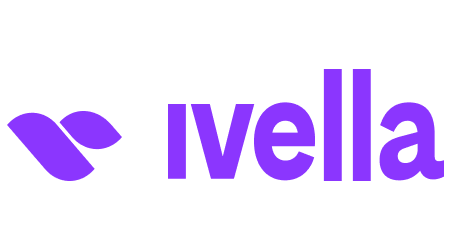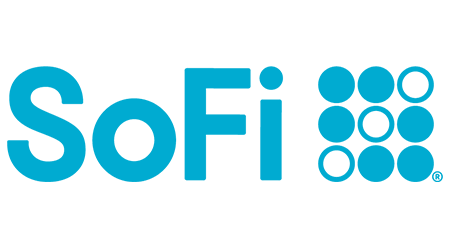-
Commitment to our readers
18 years
Helping you save money
Reviewed
by experts
Cited by
major publications
Finder maintains full editorial independence to ensure for our readers a fair assessment of the products, brands, and services we write about. That independence helps us maintain our reader's trust, which is what keeps you coming back to our site. We uphold a rigorous editorial process that ensures what we write and publish is fair, accurate, and trustworthy — and not influenced by how we make money.
We're committed to empowering our readers to make sound and often unfamiliar financial decisions.
We break down and digest information information about a topic, product, brand or service to help our readers find what they're looking for — whether that's saving money, getting better rewards or simply learning something new — and cover any questions you might not have even thought of yet. We do this by leading with empathy, leaning on plain and conversational language that speaks directly, without speaking down.
Sinking funds are extremely useful to pay for large, upcoming expenses that would otherwise drain your checking account or require you to borrow.
What is a sinking fund?
A sinking fund is money you’ve set aside for a purchase or expense you know will happen. It is often used for semi-annual or annual expenses, such as vehicle maintenance, holidays or taxes.
The purpose of a sinking fund is that you’ll have saved for an upcoming expense, and it won’t ruin your monthly budget. For example, say you have to pay $1,000 for new tires. If you don’t have that cash on hand, you may have to use a credit card, which can lead to debt and high interest payments. If you had created a sinking fund where you saved $85 each month for a year, you’d have the cash in hand and wouldn’t have to use credit or pull it from your emergency fund to pay for the tires.
Sinking funds vs. emergency funds
Emergency funds are savings designed to cover living expenses in — you guessed it — an emergency. They differ from sinking funds, which are designed and used for a specific upcoming expense. Emergency funds are used as a last resort, and in most cases, these funds are otherwise left alone.
Sinking fund categories and examples
Sinking funds are a practical way to manage your finances and avoid financial strain by setting aside money for a future expense. Some common sinking fund examples include:
- Birthdays and anniversaries
- Car maintenance and registration fees
- Christmas savings
- College tuition
- Debt payoff
- House down payment
- Pet expenses such as pet surgeries, vaccinations or licensing
- Property taxes
- Vacations
How do I separate my sinking funds?
The bucketing method is a great and easy way to sort your sinking funds. Bucketing is a simple budget method that separates your savings into “buckets,” each designed for a specific goal. When you get paid, you can allocate a specific dollar amount to be added to each bucket.
You can do the bucketing method with physical cash, such as separating the money into envelopes or jars. The downside of bucketing cash outside of a savings account is that it will not earn interest. If you want to earn interest on your funds, there are savings accounts with bucketing features so you can sort your savings buckets digitally.
4 top accounts for sinking funds
A savings account is one of the best places to put a sinking fund. Savings accounts earn interest through an annual percentage yield (APY), which means your sinking fund will grow passively. The average interest rate for a savings account is 0.42%, according to the FDIC. Plenty of accounts have significantly higher APYs, called high-yield savings accounts.(1)
9.2 Excellent
| APY | Up to 4.00% |
|---|---|
| Fee | $0 |
| Minimum deposit to open | $0 |
| APY | Up to 4.00% |
|---|---|
| Fee | $0 |
| Minimum deposit to open | $0 |
9.2 Excellent
| APY | Up to 3.80% |
|---|---|
| Fee | $0 |
| Minimum deposit to open | $0 |
| APY | Up to 3.80% |
|---|---|
| Fee | $0 |
| Minimum deposit to open | $0 |
9.6 Excellent
| APY | 3.60% |
|---|---|
| Fee | $0 |
| Minimum deposit to open | $0 |
| APY | 3.60% |
|---|---|
| Fee | $0 |
| Minimum deposit to open | $0 |

9.2 Excellent
| APY | Up to 5.15% |
|---|---|
| Fee | From $0 |
| APY | Up to 5.15% |
|---|---|
| Fee | From $0 |
Compare more savings accounts for sinking funds
Narrow down top savings account options by monthly fees, APYs and features. For a closer comparison, tick the Compare box on up to four options to see benefits side by side.
What is the Finder Score?
The Finder Score crunches over 250 savings accounts from hundreds of financial institutions. It takes into account the product's interest rate, fees, opening deposit and features - this gives you a simple score out of 10.
To provide a Score, Finder’s banking experts analyze hundreds of savings accounts against FDIC-reported national averages as a baseline. Accounts with rates well over the national average are scored the highest, while accounts with rates well below are scored low.
Bottom line
Sinking funds should be kept separate from your emergency fund, if possible. You don’t want to be using your emergency fund for regular expenses, vacations or regular vehicle maintenance. Sinking funds can help by not throwing your monthly budget off. Paying for things like car registration, tuition and Christmas presents out of pocket might require a credit card, which can lead to high-interest debt.
Compare more top savings accounts to securely place your sinking funds.
Frequently asked questions
Are sinking funds worth it?
Sinking funds are a great budgeting tactic and can definitely be worth your time. They are fantastic for expenses like vacations, Christmas gifts, car maintenance or high-cost obligations that would strain a monthly budget. You can integrate your sinking fund goals into your regular budget so when the time comes to use the sinking funds, it doesn’t drain your checking account, you don’t have to borrow and you can leave your emergency fund alone.
Can you have too many sinking funds?
While you can create as many sinking funds as you want, it’s possible to create too many. For example, if you want 10 different sinking funds but can only afford a $10 monthly contribution to each, the sinking funds will grow slowly and may not be large enough to cover the expenses you’re saving for. Additionally, you’ll have to manage all the various sinking funds, which can feel overwhelming.
Figure out your monthly budget to see how many sinking funds you can create. For example, if Christmas is six months away and you want to save $1,000, you’ll need to save around $167 per month. If you still have extra money to afford another sinking fund, you can create another and so on.
Ask a question
More guides on Finder
-
Liberty Savings Bank High-Yield Savings Account review
A free savings account with an industry-leading APY — but only one way to grab your money.
-
Bread Savings™ High-Yield Savings Account Review
A free savings account that earns a strong APY once you meet the $100 opening deposit requirement.
-
High-Yield Chime Savings Account review
Chime’s savings account has a solid APY and has no monthly fees, but it requires Chime’s checking account.
-
UFB Portfolio Savings Account Review
No monthly fees, but you need a high balance to get its best rates.
-
Best Vacation Savings Accounts in April 2025
The banks that offer the best vacation and travel savings accounts are SoFi, Upgrade, Bread, Bask, Varo, Marcus, Barclays and more.
-
Untouchable Savings Accounts and CDs
If you struggle to save, you could benefit from a savings account or CD that won’t allow you to withdraw funds.
-
Pros and Cons of Savings Accounts
Compare the advantages and disadvantages of savings accounts.
-
Uninterrupted Compound Interest Accounts
Uninterrupted compound interest accounts pay interest on your initial balance and the interest you continually earn if you don’t withdraw.
-
Best savings accounts of April 2025
How to choose the best savings account for your situation.
-
Best High-Yield Savings Accounts of April 2025
Compare some of the best high-yield savings accounts available.




